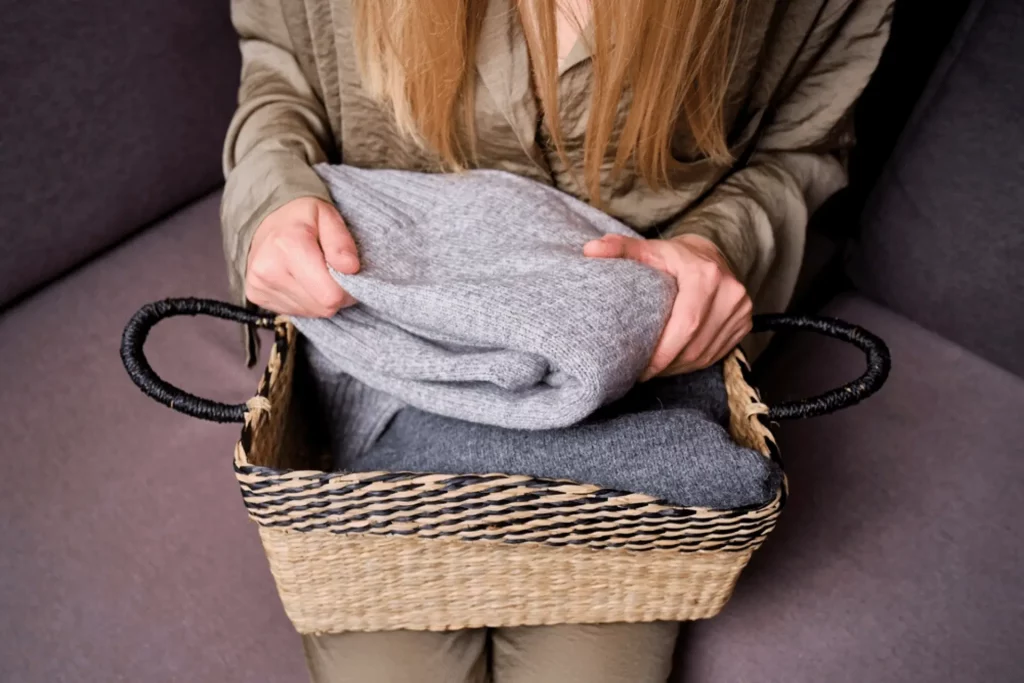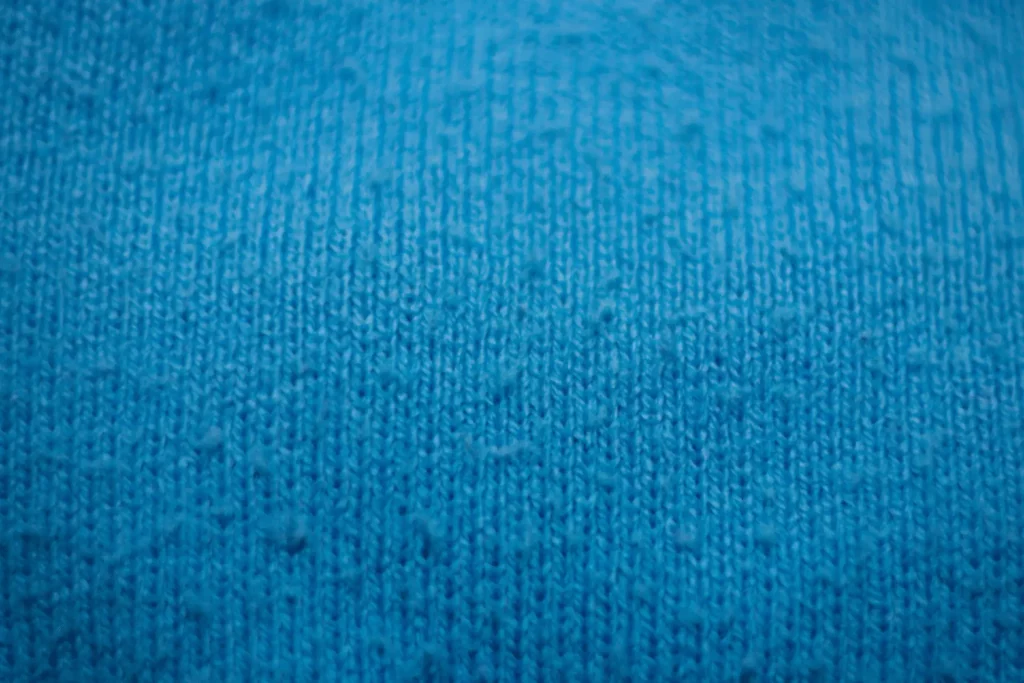Because of its suppleness, warmth, and long-lasting quality, cashmere is considered one of the most luxurious and sought-after fibers in the fashion business. Yet, not all cashmere is made equal, and it can be challenging to differentiate between genuine cashmere and imitations that are sold at a lower price.
This post will discuss recognizing genuine cashmere and avoiding being tricked by deceptive marketing practices or labeling intended to deceive consumers.
This guide will provide you with the knowledge and tools you need to make an informed purchase and enjoy the many benefits of authentic cashmere, whether you are shopping for a cashmere jumper or scarf or want to learn more about this precious fiber. Whether you are shopping for a cashmere jumper or scarf or want to learn more about this precious fiber.
Table of Contents
What Factors Influence the Quality of Cashmere?
The fineness and length of the fibers in cashmere are the most critical characteristics determining its excellence. Things manufactured with fine long fibers tend to pill less and are better at holding their form than those made with cashmere of a lower grade; in addition, these items will continue to improve with each wash. Although shorter fibers create a softer feel and are loftier, they also increase the likelihood that the cashmere item may pill.
The texture and cost of an item will differ depending on whether it is made entirely of cashmere or blended with other fibers. Cashmere may be combined with other fibers, such as wool, silk, or synthetic fibers, to create a mix.
These less expensive fibers bring the actual cost down, and mixes are frequently constructed with cashmere of a lower grade. When you buy a mix, you are giving up some of the qualities that make cashmere such a desirable material, such as its ability to insulate against cold while maintaining its softness.
Cashmere is known for its warmth and softness, while merino wool is a well-known option for warmth. To settle the debate and determine the best choice, we will conduct a detailed comparison of both fabrics.
How Can You Identify Pure Cashmere?

You need to know the following to recognize high-quality cashmere, including tests you can perform in the shop to ensure authenticity.
The Look Test:
When you are in the shop, you may make use of the bright lights that are located above you. Put them to work for your benefit. Take up the cashmere item, hold it at the same height as your eyes, and cast your gaze across the surface of the cloth. You should observe between one and two millimeters of fluff or fibers. Longer fibers imply less pilling.
If there is more fluff than there is room for in two millimeters, you have reason to be skeptical. In most cases, this indicates that the maker attempted to improve the garment’s softness by including shorter strands in its construction. Yet, those short hairs will become worn out very quickly.
The Pilling Test:

A cloth will pill when rubbed against itself, also called bobbing. The arms, elbows, sleeves, and stomach areas of a sweatshirt or other clothing are typically where pilling first appears. When the strands of fabric are shorter, it is simpler for those fibers to become tangled and twisted.
The quality of the cashmere determines whether or not the fabric will pill. Cashmere textiles can pill. The lower grades of cashmere wool are more likely to pill than finer and more tightly woven cashmere wool. The pilling test is what we get when we use that premise as our starting point.
You must just run your hand along the cashmere to feel its texture. You could discover almost immediately that little balls of fiber are beginning to develop. This indicates that the fibers that make up the fabric are shorter, indicating the fabric’s quality is worse. Cashmere of any quality will pill with time when subjected to friction, but only cashmere of the lowest grade will pill quickly.
If you already use other wool types like merino wool, and have pilling issues with your apparel, these hacks can solve the problem for you when you buy cashmere wool.
The Touch Test:
The texture of cashmere should always be smooth and gentle to the wearer’s touch. If it does, the cashmere you touch is lower quality or a blend. The higher the cashmere quality, the softer the item will be.
Some manufacturers soften the cashmere by treating the fibers with a chemical or softener to get the desired effect. Be wary if the cashmere appears to be unusually soft for its quality. This indicates that cashmere has a lower level of durability.
The Stretch Test:

First, the garment or object is gently stretched out, and then the stretch is released. Then, the item is checked to see if it returns to its former shape. Superior quality cashmere will quickly return to its standard shape, whereas lower quality cashmere may either stay stretched out or take significantly longer.
If you want to utilize the stretch test another way, consider gazing through the item. For instance, a jumper of inferior quality made from cashmere may appear flimsier and more prone to developing holes when held up compared to a jumper of good quality.
The Ply and the Gauge:
Ply and gauge are two other characteristics of cashmere that have the potential to influence both its appearance and its functionality. They are not indicators of the product’s quality; they only describe its appearance and how it works. It is important to remember that the ply and gauge are not necessarily specified on the label or in the product description.
The number of cashmere strands twisted together to produce the yarn is called the ply. “2-ply” refers to a yarn with two twisted threads, whereas “3-ply” refers to a yarn with three twisted threads, and so on. Try to find things that have at least two layers. More numbers of plies, such as 4-ply, result in more incredible overall warmth but also contribute to the item’s overall weight.
The gauge of a knitted object is a measurement of how tightly it is knitted. The higher the gauge number, the more tightly the knit fabric is made, and the greater the percentage of cashmere yarn utilized. Garments made of cashmere are often produced in 7 gauge (7GG) and 12 gauge (12GG) sizes (12GG).
If there is a particular function that you are looking for from the cashmere item that you are purchasing, such as whether you want it to be light or hot, the ply and gauge should play a role in your selection.
The Weaver Initial Test:
Due to the delicate nature of cashmere fibers, cashmere items are almost always woven or knitted by hand. This is necessary so that the production process does not damage the fibers. Because it was hand-woven, items made by these weavers typically include their initials in the corner of the item, signifying that it is made entirely of cashmere.
Price:
While selecting cashmere goods, you must also consider the product’s price. Because the wool is only collected once a year, the production expenses do not allow a high-quality item to be sold at a meager price. If you locate a cashmere product sold at a price that does not seem to make sense, it will almost certainly be a fake.
Rub:
When two surfaces are rubbed together, a phenomenon known as static electricity can be created. You may be aware of this phenomenon. This particular type of energy is quite simple to identify. Acrylics and polyesters emit sparks when rubbed together, while plastic draws small bits of paper. Hence, rubbing your cashmere towel will produce the best results in the dark.
Acrylic or polyester is the likely culprit if you both hear anything and see a spark. Suppose it does not, massage the material for a bit and then position it next to little pieces of paper. If it does not take up pieces of paper, it is most likely made of pure cashmere.
Microscopic Identification Test:

When the coarse fibers of a cashmere product are examined under transmitted light, it is noticed that the diameter is reduced, and the medullar cells do not cover the total diameter. This is because the coarse fibers are longer than the delicate fibers.
After being filled with air, the medulla of the fiber will have a black appearance. In addition, the scales that make up the kemp fibers peel off in the shape of a diagonally elongated mosaic with smooth edges.
When the delicate fibers of a cashmere product are inspected using transmitted light, the fine fibers give off the appearance of block-size patterns organized near one another.
The Many Grades of Cashmere:
Thus, you are interested in learning how to recognize high-quality cashmere. Cashmere has a few distinguishing qualities that contribute to its overall excellence. There are three quality cashmere classes, ranging from A to C.
Grade A Cashmere:
It is the most costly type of cashmere because it is the finest, longest, and most long-lasting variety. The length of Grade A cashmere is around 36 millimeters, while the diameter is 14 microns. When you see the price, you can experience shock and wonder why it is so expensive.
The reason for this is that the strength of the fiber is maintained even though it is relatively thin. You gain a longer lifespan from the clothing because of its increased toughness. In addition, you may anticipate the price to be extravagant if the Grade A cashmere is also “white for white” cashmere from China. This is because the quality of the cashmere is significantly higher.
There are significant distinctions in how the fibers wear. Cashmere of a higher quality tends to pill less than cashmere of a lower grade, and goods manufactured from cashmere of grade A tend to keep their form considerably better. Moreover, the finer the cashmere, the softer it is.
You should understand why a cashmere scarf at the shop might cost anything from $12 to $5,000. The item is almost always made of genuine cashmere wool, although the quality could be better.
Grade B Cashmere:
The cashmere fibers considered second-tier quality have an average thickness of around 19 microns.
Grade C Cashmere:
The “C” denotes the cashmere of the lowest grade. Fibers that are thicker than usual and have a diameter of around 30 microns are one of the characteristics of Grade C fibers. The least expensive type of cashmere is grade C.
Where Exactly Does Cashmere Originate?
Cashmere is obtained from Kashmir goats native to the northern hemisphere. China, Iran, Mongolia, and Afghanistan are home to some of the largest herds of Kashmir goats. From the 21st of June to the middle of December, the goats add a layer of fleece to their bodies for warmth.
The longer the goats are exposed to temperatures below freezing, the longer their fur will become. A protective layer that is wiry and waterproof makes up the outside of the coat, while the undercoat is very fine. The undercoat is where cashmere originates from.
However, the structure and degree of suppleness of the goats’ fur can be somewhat variable according to the geographic location of the animals. The finest cashmere is obtained from the fleece of Kashmir goats raised in China or Mongolia.
Frequently Asked Questions:
Does All Cashmere Pill?
Cashmere fibers are short and thin, so they tend to pill. Nonetheless, using cashmere of a high caliber and taking good care of it can lessen pilling.
Does Cashmere Get Static Electricity?
Absolutely; due to their inherent qualities and traits, cashmere fibers can produce static electricity. This might happen when the clothing scrapes against other fabrics or during the dry winter months. But, a humidifier or an anti-static spray can lessen or eliminate static electricity in cashmere clothing.
Does Cashmere Stretch?
Because of the characteristics of its fibers, cashmere may stretch to some amount. Yet because cashmere is such a fragile and thin fabric, overstretching it can harm the fibers and cause the garment to distort. Cashmere should be handled delicately and shouldn’t be stretched above its limit of flexibility.
Conclusion:
You should now be able to identify the highest-quality cashmere in the store by using the advice in this article and the information! If you want just the softest, coziest cashmere available, get the quality that meets your budget. With the proper maintenance techniques, high-quality cashmere will last you a lifetime!

